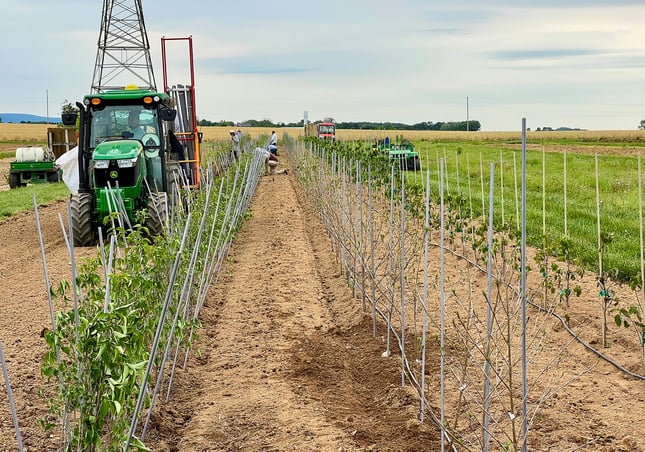As a landscaper, you want to know as much as you can about the expected hardiness and survival rate of plants you install. When you place an order for landscaping trees, you want to know that they are solid—that they were grown not just to make a good first impression, but to thrive for years to come. So when you are considering a new grower, what can you do to verify that those beautifully formed, reasonably priced trees are solid?
You can ask questions and look for evidence that the nursery operation follows best practices for maintaining a growing environment that is appropriate for the plants they produce.
We cracked open this topic of nursery best practices in a previous blog, “Why Nursery Plant Propagation and Planting Techniques Matter.” But now we want to dive a little deeper and share some ideas that could help you decide on whether or not to add a new grower to your list of sources.
How Site and Soil Contribute to the Success of Landscaping Trees Over Time
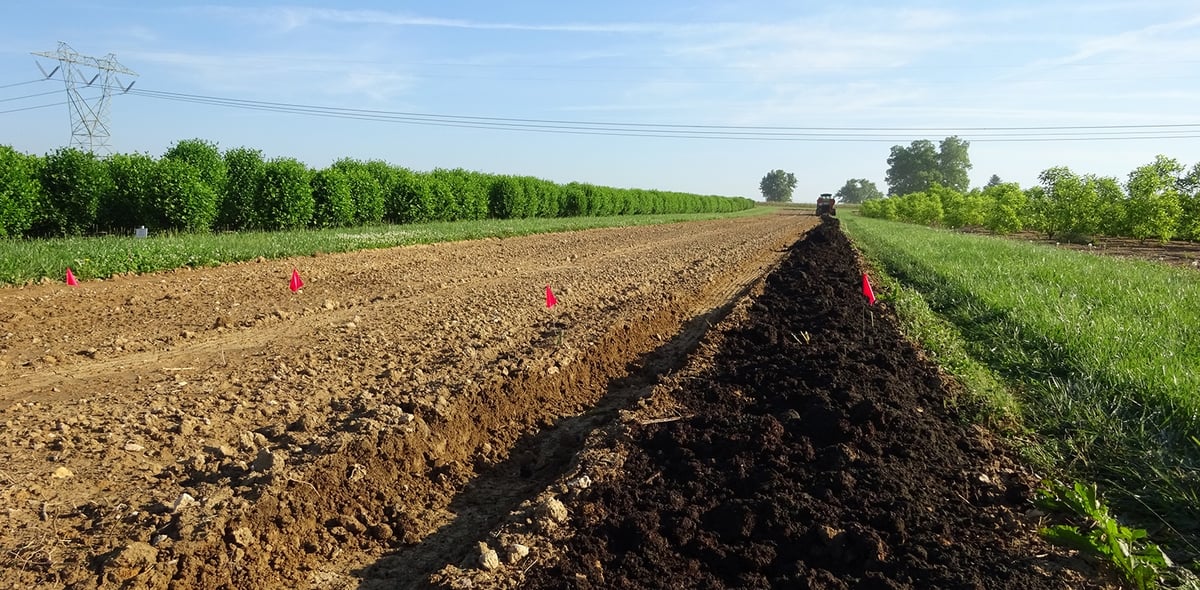 You want to ask about the character of the growing environment. What is the quality of the soil and how is it being managed by the grower? You want to know that the site is appropriate to the particular type of plant being grown. For example, certain hollies demand well drained soil. If the site doesn’t provide that, the grower would need to implement soil management techniques to correct it–or grow a different type of tree.
You want to ask about the character of the growing environment. What is the quality of the soil and how is it being managed by the grower? You want to know that the site is appropriate to the particular type of plant being grown. For example, certain hollies demand well drained soil. If the site doesn’t provide that, the grower would need to implement soil management techniques to correct it–or grow a different type of tree.
If a grower is employing techniques to manage or improve the growing environment, you’ll want to know what those are. To counteract compaction from heavy soil, for example, some growers might employ subsoiling. But that’s a temporary fix and doesn't solve the problem long term. Look for plants that are being grown on premium soil that is appropriate for the plant. That’s going to give you a very good sense of the long-term value of the plants.
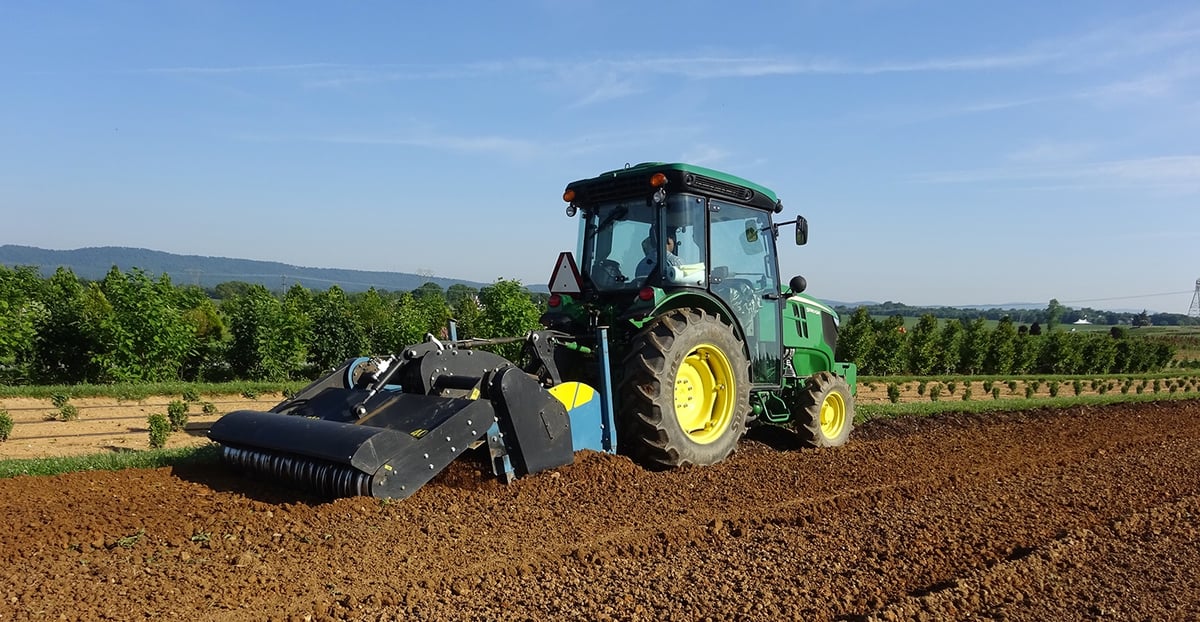 In terms of soil management, you want to see deep tillage that introduces nutrient rich organic matter to improve soil. And, as you know, soil pH is critical in terms of productivity in the plant world. You’ll want to know how that pH is being managed–if it needs to be managed.
In terms of soil management, you want to see deep tillage that introduces nutrient rich organic matter to improve soil. And, as you know, soil pH is critical in terms of productivity in the plant world. You’ll want to know how that pH is being managed–if it needs to be managed.
At Waverly Farm, we have the good fortune of sitting on top of a limestone base. That makes our pH right about perfect at 6.9 to 7.1 for the types of landscaping trees and shrubs we produce.
Planting and Propagation Details for Landscaping Tree Stocks
Protect the Root System
When planting, the top priority is to take care of the root system. It’s best to time it for when the soil is not too wet or too dry. If it's too wet (and heavy), there’s a risk you’ll mangle the root system of a bare root tree. You want to have reasonably dry soil for backfilling into the trench where you've just placed the plant.
At Waverly Farm, we use a product called “soil moist” for bare-root liner stock. It’s excellent for holding moisture and releasing it slowly to new roots. We think it gives our plants a bit of an edge.
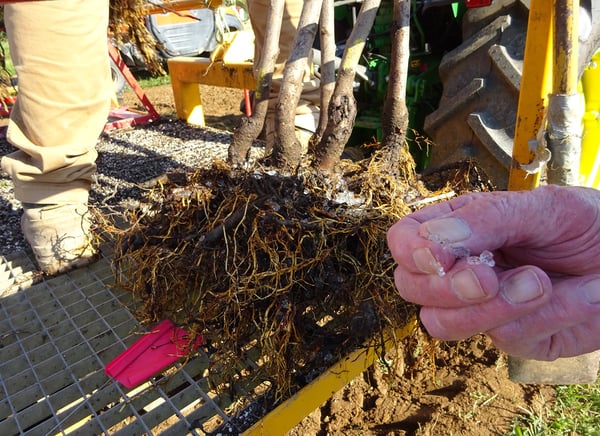 We believe irrigation must be in place and ready to run on the same day we plant even if the soil moisture is perfect. We want that system to be available without delay when needed.
We believe irrigation must be in place and ready to run on the same day we plant even if the soil moisture is perfect. We want that system to be available without delay when needed.
Pruning begins, believe it or not, at planting time. We prune below ground and above. For bare-root tree stock, we cut off broken roots and trim excessive growth before planting to stabilize the plant and stimulate growth. Above ground, we get a head start on developing a strong leader and sound branching structure by selective pruning on day one–or by the end of the first year.
Grow Your Own Liner Stock
Most growers don’t invest in propagating their own plant stock. We are heavily invested in it because, when we control the process, there are no surprise issues. We take cuttings from our existing field plants that we know are well managed, well grown, and nearly pest free.
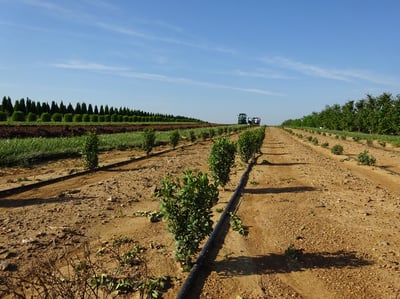 It is not possible for us to propagate everything we need. A number of popular plants that we grow are patented and must be purchased. For those, we select the very best suppliers. That too, contributes to the success of our landscaping tree stocks– buying the highest quality liners when we must.
It is not possible for us to propagate everything we need. A number of popular plants that we grow are patented and must be purchased. For those, we select the very best suppliers. That too, contributes to the success of our landscaping tree stocks– buying the highest quality liners when we must.
Overall what you are looking for when you are talking to a new grower is to see how much they have employed the concept of vertical integration in their operation. The more they do to control production on-site and in-house, the more reliable and repeatable those processes will be.
So, take the time to talk to your grower or, better yet, schedule a nursery tour. They should be able to describe their field operation and growing processes down to the nitty-gritty details. Those details are what make the difference between growers who can produce consistently over many seasons–and those who can’t.
Our ebook “Why Accurate Plant Pricing is Good for Everyone” will give you an additional perspective on how all those field production details affect the delicate balance between price and value.




